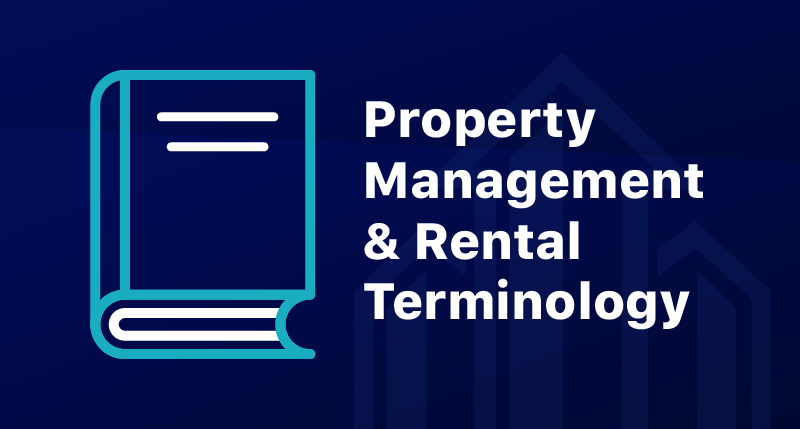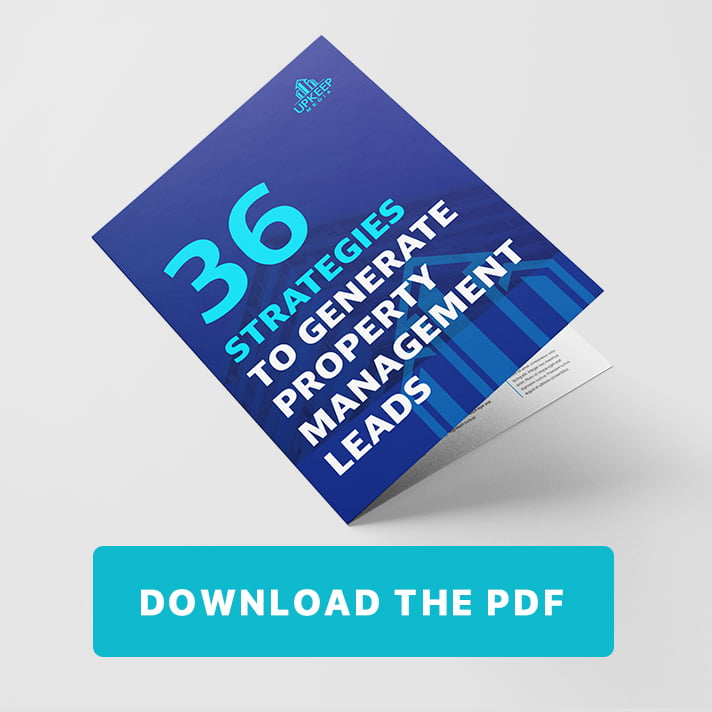
Abandonment: The surrender or relinquishment of a real estate property, including a piece of land or a housing unit.
Accumulated Depreciation: The asset’s depreciation from the acquisition phase to the latest depreciation results in dollar amount.
ADA: Abbreviation for The Americans with Disability Act, a federal legislation that prohibits any form of discrimination against people with disabilities.
Amortization: The equalization of the regular mortgage payment over the life of the loan by lowering the interest payments and raising the principal payments. The repayment of loan principal over time.
Annual depreciation: The depreciation of the asset in the recently finished fiscal year in dollar amount.
Affordable housing: Housing governed by a federal or state agency with an aim to help people and control their rent when they meet certain criteria.
Agent: Individuals who have a legal basis to act on behalf of another person.
Amenities: Material and immaterial features of a given property that increase its value or make it more desirable.
Apartment: A residential unit inside a structure built for housing. Sometimes defined as a rented living space, effectively excluding condominiums and analogous residential units.
Broker: A professional in the real estate sector who buys and sells property on behalf of others while receiving a commission in the process. Brokers need a license and proper eligibility to practice in their state of residence.
CAP Rate: The capitalization rate (CAP rate) expresses the anticipated rate of return from a real estate investment property with an aim to assess the investment’s potential and profitability.
Comparables (Comps): A part of a valuation technique that determines the value of a current asset by using a recently sold asset similar enough for indicating the expected sale price.
Condo/Condominium: A building with multiple units that can be owned by the people living inside. The common areas and amenities are equally owned by all the dwellers within the condominium.
Conventional Housing: A type of housing that stays within the area’s housing standards or the market rate limits.
Co-Signer: A secondary signer on a lease or mortgage who verifies the principle signer’s identity and/or provides additional assurance to the lender or landlord.
Curb Appeal: A concept expressing the attractiveness of the house’s visual look as viewed from the street level.
Depreciation: Loss of value resulting from the loss of functionality, economic obsolescence, or physical wear.
Duplex (House): A house built to include two separate individuals or families within the same structure. For example, when one family lives on the upper floor and the other one downstairs, then it’s a duplex.
Equal Housing Opportunity: All American citizens can have the opportunity to live in different housing communities regardless of their age, disability, gender, familial status, nationality, race, or sexual orientation.
Equity: A difference between the home’s market value and the monetary amount owed to the lender who holds the mortgage. Equity is the amount the owner of the property would receive after paying back the mortgage.
Escrow Account: An account opened by the broker for holding the real estate transaction funds until a successful completion or cancellation. Using this account ensures that the buyer has enough money for finalizing the transaction after the approval.
Ethics/Professionalism: A system of applied moral ideas that guide professional behavior and decisions on a daily basis.
Eviction: A legal process for the removal of a person from their current home. The reasons include lease agreement violations and unpaid rent or mortgage.
Eviction Notice: A legal notice from the landlord that describes the tenant’s default connected to the lease terms. Eviction notices aim to inform tenants of a pending eviction suit against them.
Fair Housing Act: A federal law that aims to ensure there’s no discrimination in the housing market based on age, color, disability, familial status, gender, nationality, race, and religion.
Fair Market Value (FMV): An agreed-upon price that well-informed buyers and sellers reach after negotiations driven by the current market conditions.
Fixed Expense: An expense item that’s independent of the rental income, yet still part of the property’s operating budget (e.g. Regardless of whether you have a tenant or not you will still have to pay the property taxes every year).
Flat Fee: A monthly or yearly property management fee in a dollar amount.
Homeowners Association (HOA): An organization consisting of homeowners residing in a specific condominium complex, planned community, or a subdivision with an aim to create and enforce guidelines and rules in the building.
Housing Assistance Payments (HAP) Contracts: HAP contracts allow private landlords to receive rental housing assistance on behalf of a low-income household.
Housing and Urban Development (HUD): HUD is the U.S. Department of Housing and Urban Development. The department focuses mainly on increasing the rate of homeownership and access to affordable housing.
HVAC: A combined technology of heating, ventilation, and air conditioning with an aim to create comfortable conditions indoors.
Income Levels: Income levels set by the government serve statistical and decision-making purposes. For example, these are used for determining the tax credit limits.
Interest: A percentage of the principal that’s charged by the lender from a borrower for the use of particular assets. In real estate, interest usually refers to mortgage interest rates that depend on the Federal Reserve Discount interest rate, credit report and score, and lender’s business decisions.
Investment Property: A property that is purchased by the owner to generate profit through renting the property out to tenants.
Landlord: An owner of a property who receives payments from tenants taking residency in the owned rental unit.
Landlord Insurance: An insurance policy that covers the landlord from financial losses associated with their rental property, such as theft and fire. Usually, the policy lists a host of optional coverage items; for example, rent guarantee insurance and legal protection.
Landlord-Tenant Law: A part of the Common Law that outlines the rights and duties of both landlords and tenants, including the duty to preserve the premises on the tenant’s part and duty do deliver possession on the landlord’s side.
Lead-Based Paint Disclosure: Under this regulation, individuals and families need to be aware of homes harboring lead-based paint. It became effective in 1996.
Lease: A contract outlining the terms and conditions between a landlord and tenant under which the tenant gets an exclusive right to use the home for a fixed term. In turn, the landlord receives payments for the duration of the contract.
Lease Option: An agreement that provides the tenant with an option to buy the property during or at the end of their tenancy. This agreement prevents the owner from selling the property to any third parties until the lease expires.
Lease Renewal: The continuing of the lease after its initial expiration.
Lease Term: The time restriction regulating a tenant’s right for the home’s exclusive possession.
Leasing Agent: A person, namely a licensed agent, who leases real estate properties and signs them on behalf of the lessor.
Lessee: A tenant who rents the property from the landlord.
Lessor: A landlord who grants the lease to the tenant.
Long-Term Rental: A long-term lease is often defined as anything that is agreed-upon for more than one year.
Low-Income Tax Credit (LITC) Properties: The properties eligible for tax credits in return for signing a lease agreement with eligible tenants. The eligibility criteria are based on requirements by the IRS, HUD, and the Justice Department.
Maintenance: An umbrella term for regular activities that keep the property in good condition.
Market Rate: The price for a real estate transaction that depends on the seller’s expected price and the buyer’s inclination to pay.
Mortgage: A debt instrument outlined by a legal agreement that obliges the borrower to pay the loan back as instructed, whereas the lender has a conditional right of ownership on the mortgagor’s property as loan security.
Net Operating Income (NOI): A before-tax figure showing all property revenue after subtracting essential operating expenses while not including amortization, capital expenditures, and depreciation.
Operating Budget: A financial plan predicting the property’s income that is balanced by various expenses over a period of one year.
Percentage Fee: An agreed-upon percentage from the property’s gross collectible income for a property management fee.
Persons With Disabilities Act: An act that ensures equal opportunities for people with disabilities, including the opportunity for housing without facing any discrimination.
Pet Screening: A process of collecting information and validating Assistance Animal requests by the landlord or a specialized company in order to discover fraud and assess potential risks attached to each particular pet.
Pre-Qualification: A primary stage of the bidding process that establishes the maximum amount of loan for the applicant.
Principal: A person who appoints another individual as an agent representing him or her.
Property: A real estate asset that includes land and any accompanying permanent structures, such as houses or other buildings.
Property Inspection: A visual inspection of a building that has to be carried out by a qualified professional in a non-invasive manner.
Property Management Agreement: An agreement clarifying the service, responsibilities, and payments that will be signed by the landlord and a property management company.
Property Manager: A person managing a real estate property that belongs to someone else. Property managers get compensated for dealing with accounting, maintenance, and rent collection among other duties.
Property Showing: A scheduled appointment that allows prospective tenants to make a walk-through tour in the property.
Property Taxes: A tax based on the property’s value that is paid by the property owner to the local government.
Profit and Loss Statement: A financial report generated on an annual basis that shows the real net profit before any taxes.
Proration: The process of breaking down and dividing expenses proportionally based on each party’s share of owning or renting a property.
Real estate: A portion of land that may or may not have attached permanent structures, such as buildings.
Real Estate Agent: A qualified agent who leases and sells real estate properties.
Real Estate Cycle: A process reflecting the cycles of real estate market, including the recovery, expansion, hyper supply, and recession. The real estate market cycle could mirror the broader economic cycles but not necessarily.
Realtor: A professional real estate agent who must belong to the National Association of Realtors.
Rent Guarantee Insurance (Rent Default Insurance): An insurance that covers the landlord in case a renter runs into financial difficulties and defaults on his or her rental payments.
Rent Collection: An activity that is undertaken by the landlord or a property management company to collect the money from each of the tenants under the terms stated in the lease agreement.
Rent Schedule: A written document listing the rental rates that could be created by the owner, property manager, or both of them.
Rent Roll: A register of rents usually showing the tenants’ names, the amount due, and total rental income received.
Rent to Own: A lease agreement that provides the purchasing possibility to the tenant.
Rental Discount: A discount given by the landlord to the tenant when certain previously agreed criteria are met. For example, the discount could apply on automatic lease renewal.
Renter Insurance: An insurance policy that mainly covers a tenant’s personal belongings and liabilities, whereas some insurance providers offer more extensive coverage.
Rental Property: A property occupied by tenants who pay the owner in return for utilizing the living space and any permanent or temporary attached fixtures. Also, according to the IRS, a permanent rental property is a house, duplex, or apartment complex occupied by tenants and not serving as living quarters for the owner or any dependents he adds to his federal tax return forms.
Rental Property Advertising (Marketing): A set of activities with an aim to fill rental property vacancies and minimize the vacancy rate by communicating with potential tenants across a variety of platforms.
Rental Rate: An amount of money the tenants have to pay to landlords over a fixed time period for renting a property.
Repairs: An action to fix broken or obsolete pieces of the property, including any fixtures inside the living space.
Return on Investment (ROI): A metric that shows how much profit an investor makes on the investment property as a percentage of the investment cost.
Sales Agent/Salesperson: A person conducting real estate activities together with a licensed real estate broker.
Section 8: A program allowing private landlords to rent properties at equitable market rates for qualified tenants with a low-income background. The voucher program rests on rental subsidized funded by the U.S. Department of Housing and Urban Development.
Security Deposit: A payment collected from the tenant by the landlord to secure funds for covering any property damage.
Single Family House (SFH): A residence built for one family.
Subletting: Renting a property by a tenant to a third-party tenant for a specified segment of the tenant’s lease agreement.
Subsidy/subsidized: A governmental financial assistance designated to a defined group or person, such as funds for accessing the housing market.
Tenant: A person occupying or temporarily possessing a land, building, or a specified unit under an agreement with the landlord for a fixed period.
Tenant Application: An application that has to be filled out by a potential renter in case of interest for a particular rental property.
Tenant Damages: Any damage occurring during the lease term that isn’t considered as normal wear and tear.
Tenant Screening: A process carried out by the landlord or a property management company to verify the background of a potential tenant. The process may include a credit check, interviews, and background check.
Tenancy at Suffrage: A situation where the tenant has no lease, yet occupies the property under the owner’s permission. For example, a tenant continues to reside in the property after the lease expiration and the owner proceeds to accept regular rent payments. Also known as a tenancy at will.
Three-Day Notice: A type of eviction notice used in some states that demands the payment of delinquent rent within a three-day period or vacating the property as the only alternative.
Townhouse: A house of usually two or three stories that connects to matching houses by a shared wall.
Turnkey Property: A residential real estate property that requires no urgent investments by the buyer and can immediately be rented out after purchase.
Utilities: The services provided for people residing in a property, including electricity, garbage, gas, sewer, and water.
Vacant Property: A property that lacks any people and personal property inside.
Vacancy Rate: The ratio of vacant rental units to the total number of owned rental units in the building, city, or in another operating category.
Vacation Rental: A rental property that is fully furnished and rented out to guests for short-term periods (e.g. two-week vacation).
Walk-Through Inspection: An inspection carried out by the landlord during the move-in and move-out procedures to document any damage, missing items, and other issues in the rental property.
Writ of Restitution: A court order requested by the landlord when a tenant remains in the property after the grace period has passed. The writ allows a forced eviction by a law enforcement officer.



